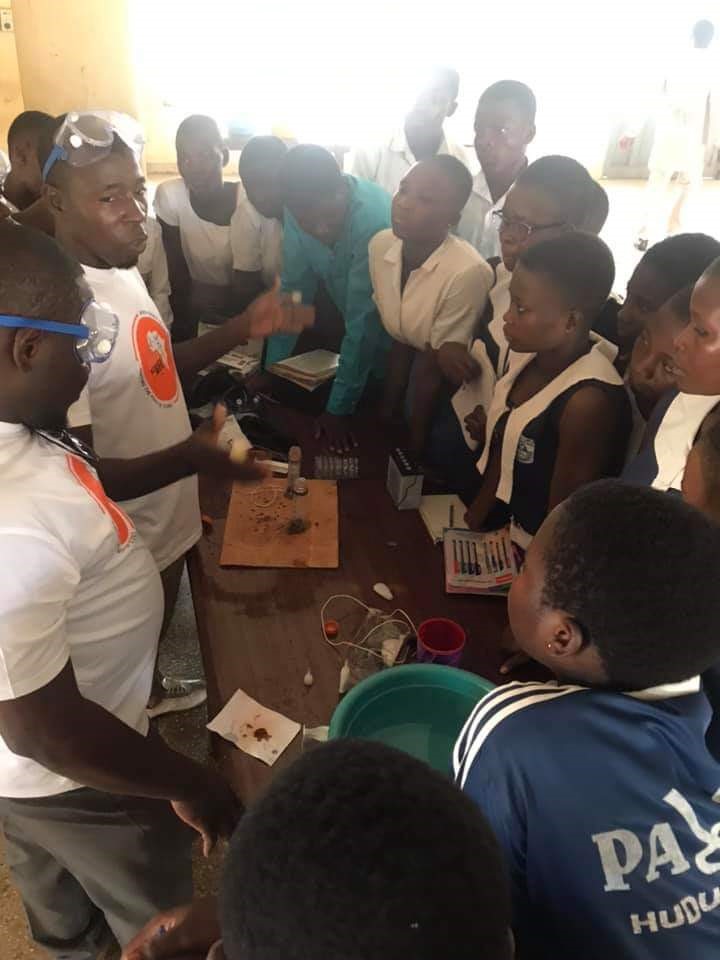The EcoSTEM Club Guide seeks support the setting up of the clubs. Here’s what we suggest:
-
Build your team
- Community engagement is key to the success of your club – this should be kept in mind as well for any community project.
- Talk to the chief, school heads, parents, etc and seek their support. Running a club is best if you can share the load and share the fun.
- Speak to other volunteers in your community better still, teachers from across the STEM subjects and beyond. See if you can create a team of like-minded colleagues to help run the club with you.
-
Choose your club members
- Decide on a class, form or grade level as target group. Our trial has targeted JHS 2, with a focus on the inclusion of girls. Decide on gender mix; are you targeting more boys or more girls? Why? Targeting a particular class or form allows for effecting monitoring and evaluation.
- It is always helpful to have students from different schools represented, so they can learn from one another, and feedback what they learn to their schools.
-
Invite your club members
- Get parents and school heads involved. Send a letter home, inviting the ‘specially selected’ students to the club and explaining to parents what the club is and the benefits it will offer their child.
-
Launch the club
- Have a ‘Club Launch’ session where you introduce the club and give the students an idea of what they’ll be doing during their time with you. Make sure it feels like a club and not just another lesson by making activities fun and engaging, and perhaps offering some incentives as long as these can be sustained.
- Giving your club a name, making badges etc. all help to make students feel like they ‘belong’ to something special. This is also a great time to discuss some ‘ways of working’ – ‘Dos’ and ‘Don’ts’ – the pupils can help create these.
-
Keep it simple
- Don’t feel any pressure to run complicated activities. Simply engaging in our monthly EcoSTEM challenges often work just as well, particularly when you’re just starting off. You might choose to it weekly, drawn over six weeks or a school term’s time. And don’t feel like you have to give up loads of time; an hour after school is perfect.
6. Celebrate
- Celebrate your members for commit to the club across a year. Take a register each week and provide a certificate at the end of the programme to the students who attend every session. These could be awarded at school assemblies to help raise the profile of the club across the school and also to motivate the students.
- You can administer a STEM club diary (again check the website for a sample) to access students formatively and also to inform on who to award a certificate. The diary has been designed to help students reflect on what they have done in the club and to give you an idea of what worked well.
- After the completion of the programme, you should issue a certificate to each student that committed to the full duration of the programme.
-
Do it all again?
- Once the duration of your programme is over, you can decide what to do next. Maybe you’d like to repeat it all over again with a new group of students? There’s no need to get a whole new set of activities organized; you can just repeat what you did with the first group.
Have fun, and share your ideas and activities on Twitter and Facebook, tagging @eduspots!

 >
>